

| FOR FURTHER INFORMATION, CONTACT: | Charmayne Marsh (c_marsh@acs.org) Michael Bernstein (m_bernstein@acs.org) 617-954-3488 (Boston, Aug. 19 –23) 202-872-4400 (Washington, D.C.) |
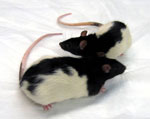 (Click for high resolution image) |
Release: Revealing estrogen's secret role in obesity EMBARGOED FOR RELEASE: Monday, Aug. 20, 2:15 p.m., Eastern Time In a demonstration of estrogen's role in controlling body weight and fat distribution, these adult female rats both received surgery to induce post-menopausal conditions. The smaller one received estrogen supplements following surgery while the obese rat did not.(Courtesy of Min Liu, University of Cincinnati Medical Center) |
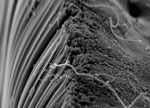 (Click for high resolution image) |
Release: Helping the carbon nanotube industry avoid mega-mistakes of the past EMBARGOED FOR RELEASE: Monday, Aug. 20, 8:00 p.m., Eastern Time Toxic by-products of carbon nanotube manufacturing These spaghetti-like structures are carbon nanotubes viewed under an electon microscope. The manufacture of these nanotubes can produce toxic byproducts, researchers report. (Photo by Anantasios John Hart) |
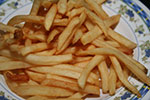 (Click for high resolution image) |
Release: Acrylamide not linked to breast cancer in U.S. women, study finds EMBARGOED FOR RELEASE: Tuesday, Aug. 21, 9:00 a.m., Eastern Time Acrylamide: No link to breast cancer Acrylamide, a compound found in a variety of widely-consumed foods ranging from French fries to coffee, does not appear to cause breast cancer, researchers report. (Credit: American Chemical Society) |
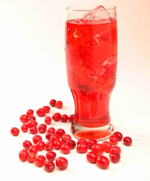 |
Release: Cranberries may improve chemotherapy for ovarian cancer EMBARGOED FOR RELEASE: Tuesday, August 21, 1:00 p.m., Eastern Time Boosting chemotherapy with cranberries. Drinking cranberry juice may help improve the effectiveness of platinum drugs that are used in chemotherapy to fight ovarian cancer, researchers report. (Courtesy of Cranberry Institute) |
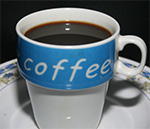 (Click for high resolution image) |
Release: Battling bitter coffee - chemists vs. main source of coffee bitterness EMBARGOED FOR RELEASE: Tuesday, Aug. 21, 1:30 p.m., Eastern Time Bitter Coffee. In a finding that could lead to better tasting coffeee, chemists report finding the compounds that are most responsible for the brew's bitter taste. (Credit: American Chemical Society) |
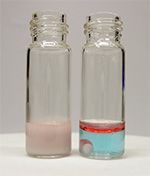 (Click for high resolution image) |
Release: Detergents, eye rinses, anf other products with an on/off switch EMBARGOED FOR RELEASE: Tuesday, Aug. 21, 3:30 p.m., Eastern Time Detergent with on/off switch (Pepfactants). The tube on the left shows the original emulsion, while the one on the right shows the rapid separation of the emulsion into oil and water after a newly developed "switchable" detergent is added. (Courtesy of Annette Dexter, The University of Queensland) |
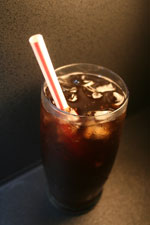 (Click for high resolution image)
|
Release: Soda warning? New study supports link between diabetes, high-fructose corn syrup EMBARGOED FOR RELEASE: Thursday, Aug. 23, 9:45a.m., Eastern Time High - fructose corn syrup New evidence suggests that sodas sweetened with high-fructose corn syrup may increase the risk of diabetes, particulary in children.(Credit: American Chemical Society) |
 (Click for high resolution image) |
Release: Pioneering tests on odors from plastic water pipe EMBARGOED FOR RELEASE: Thursday, Aug. 23, 2:00 p.m., Eastern Time Plastic water pipes affect odor and taste of drinking water In a quest for improved drinking water, Andrea Dietrich is conducting pioneering studies on how plastic pipes affect water's odor and taste.(Courtesy of Andrea M. Dietrich, Virginia Tech) |